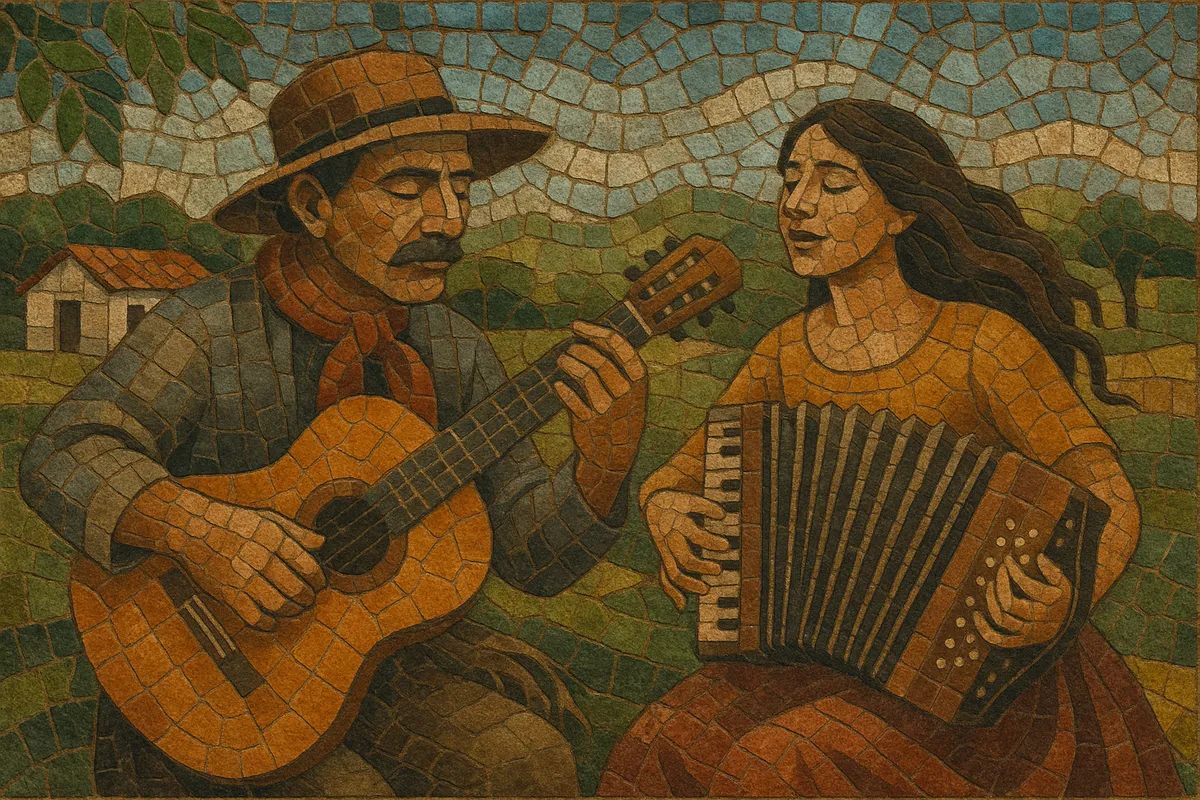Chamarrita rioplatense is a River Plate folk song-and-dance form cultivated mainly in Uruguay and the Argentine province of Entre Ríos.
It descends from the Azorean chamarrita but was reshaped in the Southern Cone with gaucho poetics, guitar-driven accompaniment, and a characteristic lilting triple meter (often 3/4 with 6/8-style swing and occasional hemiola).
Typical ensembles feature voice, guitars with rasgueado strumming, accordion or bandoneón, violin, and bombo legüero, producing a warm, wood-and-reed timbre.
Lyrics dwell on river life, pastures, mate, work, love, and local history, while the social dance is performed in couples, usually in circles or lines, at a moderate tempo.
The rioplatense branch traces its roots to the Azorean chamarrita brought by Portuguese immigrants and seafarers into the Río de la Plata basin. In ranches and river towns of Uruguay and the Argentine Litoral, the dance-song adapted to local instruments (notably guitar) and gaucho oral traditions. By the early 20th century it was a recognizable local variant distinct from its Azorean parent.
From the 1950s onward, singers and composers gave the style a stable musical profile and an emblematic repertoire. In Entre Ríos, Linares Cardozo codified the "chamarrita entrerriana" with emblematic pieces and didactic writings, while in Uruguay figures such as Aníbal Sampayo, Osiris Rodríguez Castillos, and later Alfredo Zitarrosa and Los Olimareños popularized chamarritas on radio, records, and peñas. The typical accompaniment (guitars, accordion/bandoneón, violin, bombo) and the swaying triple meter with hemiola became standard.
During the wave of nueva canción in the Southern Cone, the chamarrita’s accessible dance pulse and strophic song form carried both pastoral imagery and social commentary. Artists used it to celebrate riverine identity and, at times, to voice coded political reflections during periods of censorship.
Today the style remains a living tradition in Uruguay and Entre Ríos. Provincial festivals, folk contests, and community peñas keep the dance active, while contemporary singer-songwriters and chamber-folk projects integrate chamarrita rhythms and textures alongside other litoral genres. Educational programs and folkloric ensembles also preserve the characteristic choreography and guitar-accordion sound.


